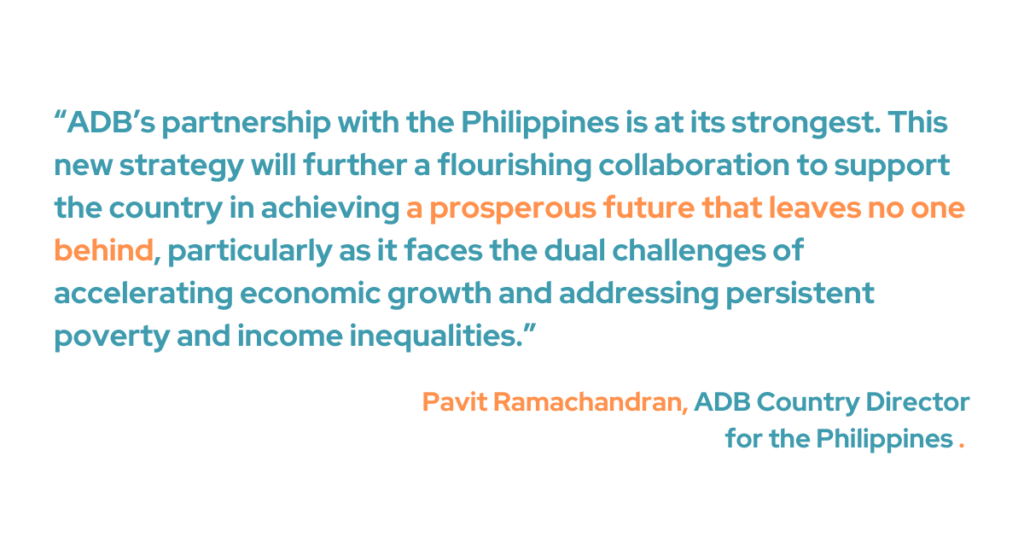
One of the countries at the forefront of climate vulnerability is the Philippines. Climate resiliency strategies are crucial for the country since it faces an increasing frequency and intensity of natural disasters like typhoons, floods, and droughts. These escalating threats from climate change jeopardize the country’s economic stability and the well-being of its citizens.
With the release of its new national partnership strategy (CPS), the Asian Development Bank (ADB) lays out a revolutionary plan for the Philippines for the next six years. This plan is intended to ensure that growth is inclusive, resilient, and sustained in the face of climate change.
The strategy, running from 2024 to 2029, will prioritize meeting pressing development demands and development demands and strengthening support for three important areas: quality infrastructure, economic competitiveness, and human development. It will also focus on nature-based development and disaster resilience.

Pavit Ramachandran, ADB Country director for the Philippines commends the relationship between the country and the institution and acknowledges how the strategy can help tackle the challenge of boosting economic growth while facing persistent poverty and income inequalities. “We are leveraging our full suite of support modalities—financial and nonfinancial—to deliver transformative impact, ensuring that the benefits of growth reach all Filipinos, particularly the most vulnerable,” Ramachandran stated
Aside from the environmental catastrophes, the Philippines is also challenged by societal and economic hurdles. Gaps in health, education, employment creation, investment in innovation, and ongoing poverty limit the potential of many young Filipinos.
A report from the World Bank highlights the urgent need for climate adaptation measures in the country, where climate-related risks threaten economic growth and can exacerbate poverty. With its economic reliance on agricultural and coastal resources, the Philippines’ financial growth is also susceptible to climate change.
By focusing on climate-resilient infrastructure, the strategy aims to improve the Philippines’ ability to cope with extreme weather events and rising sea levels. For instance, investments in sustainable urban planning and transportation systems will not only reduce greenhouse gas emissions but also create a robust framework that can better withstand climate impacts.

The Philippines’ economy is expanding at one of the highest rates in the region, with average annual gross domestic product growth of 6.3% between 2021 and 2023. Its strong investment grade rating, thriving services sector, and increased governmental expenditure are drawing more foreign direct investments.
To maintain the Philippines’ current growth trajectory, ADB’s new strategy calls for increased support for low-income household initiatives, the promotion of regional economic growth corridors through flagship infrastructure investments, and a shift in focus toward emerging sectors such as clean energy, the blue economy, and nature-based investments.
It also ensures a comprehensive approach to development by incorporating cross-cutting measures that support gender equality, digital transformation, and enhanced institutional capacity and governance. This means bolstering the quality of education and employment, increasing the availability of universal health care, and adopting technological innovation.
Aside from that, the strategy also plans to increase economic competitiveness by utilizing renewable energy, regional growth corridors, municipal revenue expansion, business enhancements, and climate-smart infrastructure. By increasing climate action, food security, biodiversity protection, and the funding of a fair transition to a low-carbon economy.